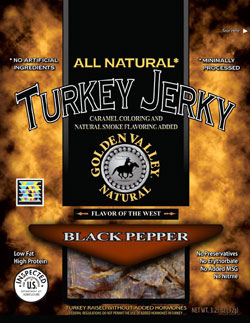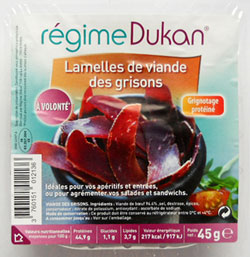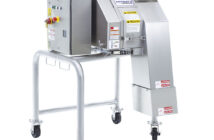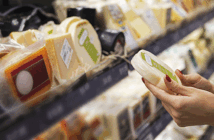The US salty snacks market is the largest and one of the most diverse in the world, encompassing some types of product that may not be included in the bagged snacks category in other countries and/or may be relatively undeveloped and limited in scope.
Meat snacks are a good example of this, with Innova Market Insights data indicating that launch numbers remain relatively small in terms of snacks introductions as a whole, with just over five percent of the global total in the 12 months to the end of June 2012, if a broad definition of snacks (salty snacks, nuts and seeds, meat snacks and finger foods/hors d’oeuvres) is used. This is up from less than three percent five years ago, however, and reflects not only growing sales in more established markets, notably the US and Africa, but also greater penetration in more nontraditional markets such as some of those in Europe.
The US has the largest meat snacks market in the world and it is dominated by jerky-style products which, despite their relative maturity, have seen good growth in recent years as manufacturers have updated their ranges to focus on a healthier image, more convenient packaging formats and a greater choice of flavour options, particularly hot and spicy variants.
Innova Market Insights recorded that 18 percent of global meat snacks launches were positioned on a health platform of some kind, but this rises to 40 percent in Europe and to 75 percent in the US, showing the greater emphasis being placed on health benefits in the more developed markets. The most popular health claims concerned naturalness and the absence of artificial additives and preservatives, used on 12 percent of launches globally, rising to 58 percent in the US.
In Europe, the meat snacks market is much more limited, with products tending to be thought of as meat products rather than bagged snacks and the most popular lines tending to be salami-style sausage products, rather than dried snacks such as jerky and biltong.
Germany has the largest market, reflecting its traditional love of wurst and salami-style sausages, although jerky-style products are also increasingly popular, with the US jerky market leader, Jack Links, having its European base in Germany. The meat snacks market is dominated by Unilever’s BiFi mini salami snack brand, which is celebrating its 40th birthday in 2012 with a number of initiatives including a special limited edition BiFi HOT variant. It is also featuring in a co-branded launch with German snacks market leader Intersnack, which is introducing a BiFi limited edition flavour variant under its market-leading Chio potato chips brand in the autumn of 2012, which should serve to further raise awareness and enhance the snack image of the brand.
While Germany has the most established European market, the very underdeveloped UK market is seeing much higher levels of new product activity, although this probably includes more pastry-based meat snacks. The UK market for meat snacks has long been dominated by salami-style lines from Unilever’s Peperami, ahead of Kerry Foods’ Mattesson’s Fridge Raiders, but the market is changing in character, with the arrival and promotion of more jerky-style products, both British and imported lines. A notable feature has been the arrival of smaller specialist British companies, often promoting the use of local meats and/or more traditional British flavours. These include The Bath Pig, which makes chorizo from British pork, The Purbeck Larder with its rosemary and beef biltong and Chow British Beef Biltong.
Lu Ann Williams, research manager at Innova Market Insights, says that with the undeveloped status of the meat snacks market outside the US there are clearly further opportunities for growth, particularly if the image of the products can be presented as tasty, healthy, substantial and convenient snacks for all occasions, boosted by ongoing product and promotional initiatives.
For more information:
Visit: www.innovadatabase.com






























































































